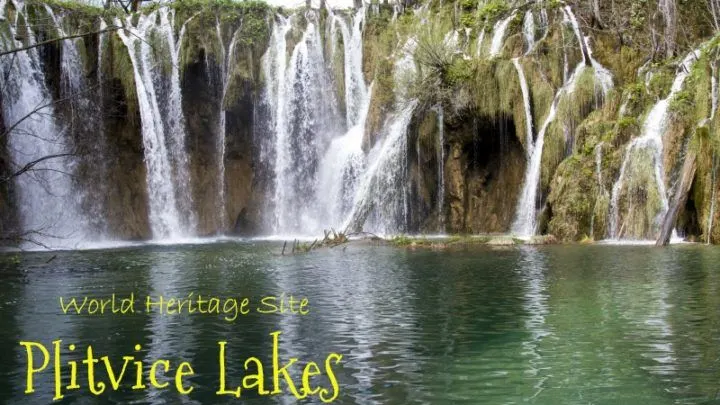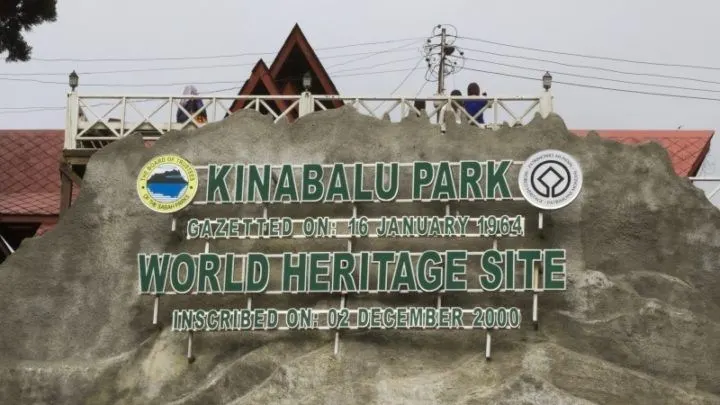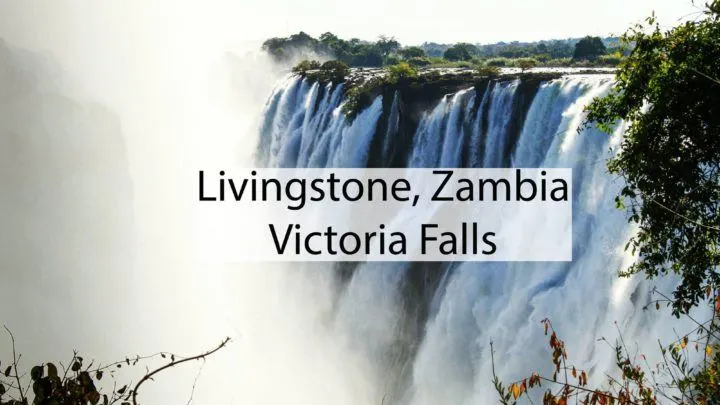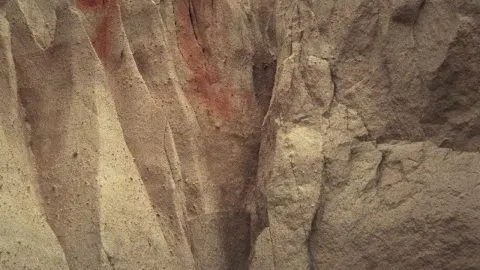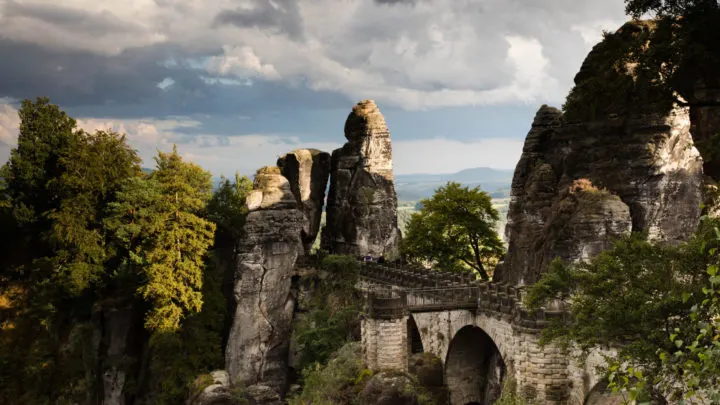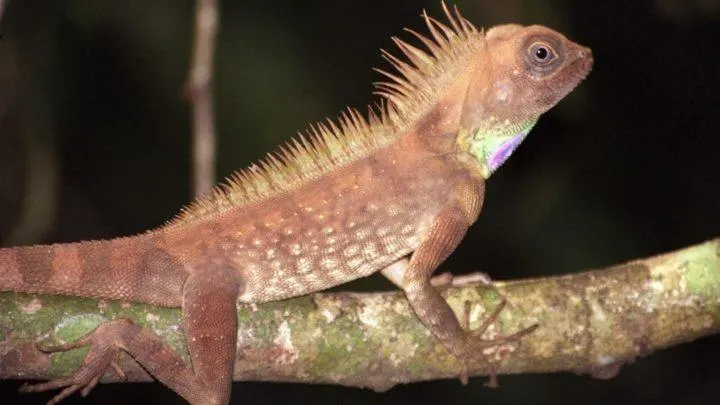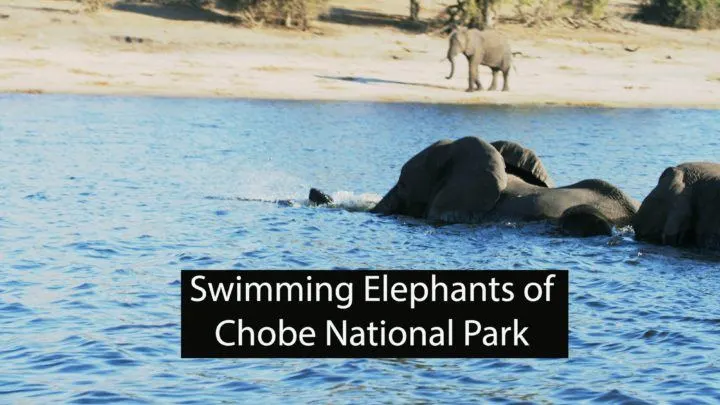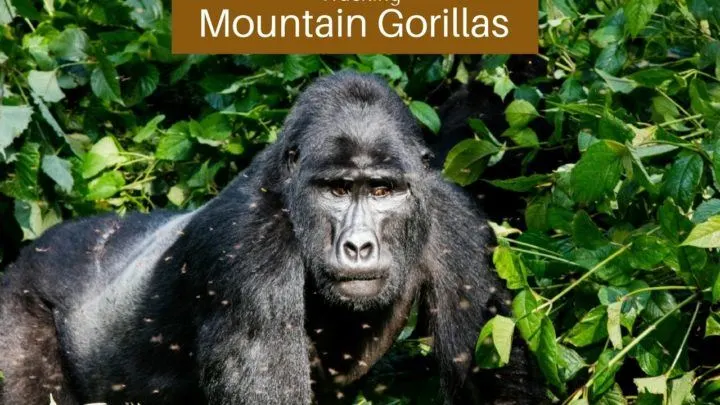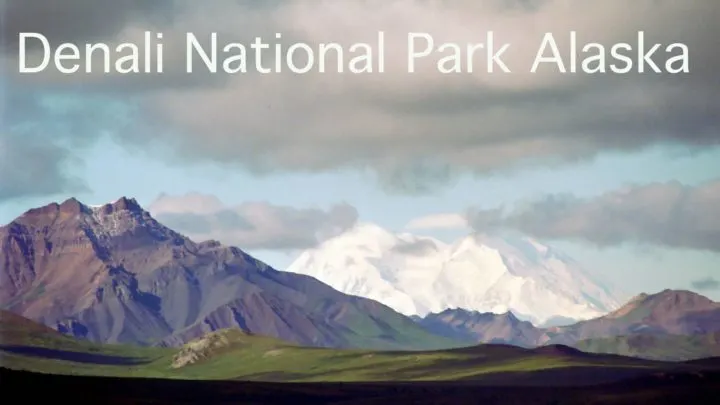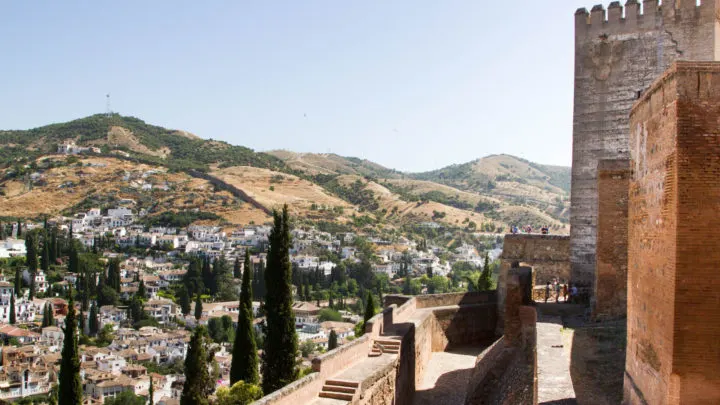Would you love cruising through a Yellow Water Billabong teeming with birds and crocodiles and wandering through ancient Aboriginal rock art sites? Kakadu National Park in Australia has these and more.
It’s great to be back in Australia to visit family and also to see and experience more of this amazing country. We come to see family, and we also come to see Australia; it’s a beautiful, exciting, friendly, fun country. This trip included a once-in-a-lifetime trek through Australia’s Top End and Red Centre on The Ghan Train, and along the way we visited Kakadu National Park.
After flying into Darwin and visiting Litchfield National Park, we headed to Kakadu National Park. Kakadu is nearly 20,000 sq km and is the largest National Park in Australia. It’s also a UNESCO World Heritage listing, for both natural and cultural values.
While in Kakadu, we took a Yellow Water Cruise, visited two major Aboriginal rock art sites, learned a bit about Aboriginal history and culture, and saw billabongs, birds, and crocodiles.
Here’s what’s in this article:
- Best time to go and Kakadu’s six seasons
- Planning a Kakadu National Park visit: Visitor Guide with Park Map, and Passes (fees)
- Google map with our trip plotted and sites pinned
- Yellow Water Cruises, how, when and where
- Aboriginal Rock Art at Anbangbang and Ubirr
- Anbangbang Billabong walk
- Warradjan Aboriginal Cultural Centre
Best Time to Go to Kakadu National Park
It may seem odd to begin an article with Best Time to Go, but in Kakadu the time of year really matters. During the monsoon (wet) season, much of Kakadu is a hot, humid floodplain with stunning waterfalls and beautiful plunge pools. During the dry season, it’s cooler, less humid, and easier to get to rock art sites, take a Yellow Water Cruise, and walk around a billabong.
So a great first step in planning a trip to Kakadu is to decide what you want to see and do. If stunning waterfalls, like Jim Jim and Twin Falls, are your top priority, then go in the wet season when there’s actually water flowing over them (November to mid-May). If yellow water cruising, rock art, and wildlife are your quest, then the dry season is best because you can get around easier and get to more places.
We chose the dry season and went in mid-June. The previous day, we were in Litchfield National Park where we saw gorgeous waterfalls, so in Kakadu, we wanted yellow water cruising, Indigenous rock art, and a billabong walk.
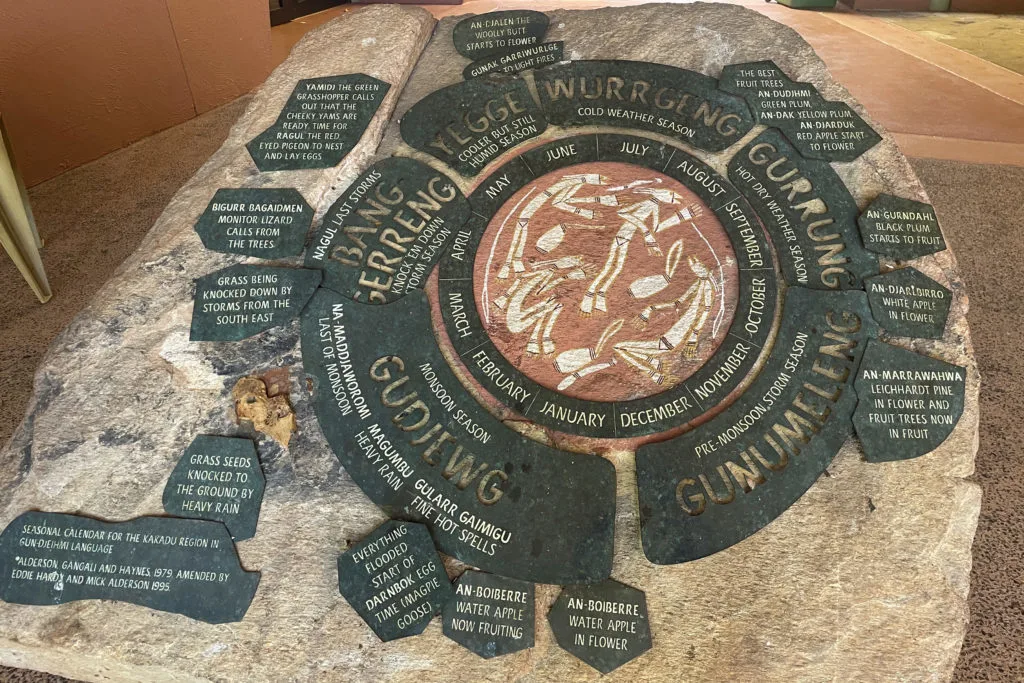
The Seasons in Kakadu
There is actually more to Kakadu’s seasons than simply classifying them as wet or dry. The indigenous people divide the year into six seasons. Here’s a summary with temperature ranges included:
- December to March (24°C – 34°C): Monsoon – true tropical summer with thunderstorms, heavy rain and flooding.
- April (23°C – 34°C): “Knock’em down” – violent, windy storms that flatten the speargrass.
- May to mid-June (21°C – 33°C): Cooler – drying winds but still humid.
- Mid-June to mid-August (17°C – 32°C): Cold weather – early dry season, creeks stop flowing, and floodplains dry out.
- Mid-August to mid-October (23°C – 37°C): hot and dry.
- Mid-October to late December (24°C – 37°C): pre-monsoon storm – hot weather that becomes increasingly humid with afternoon thunderstorms.
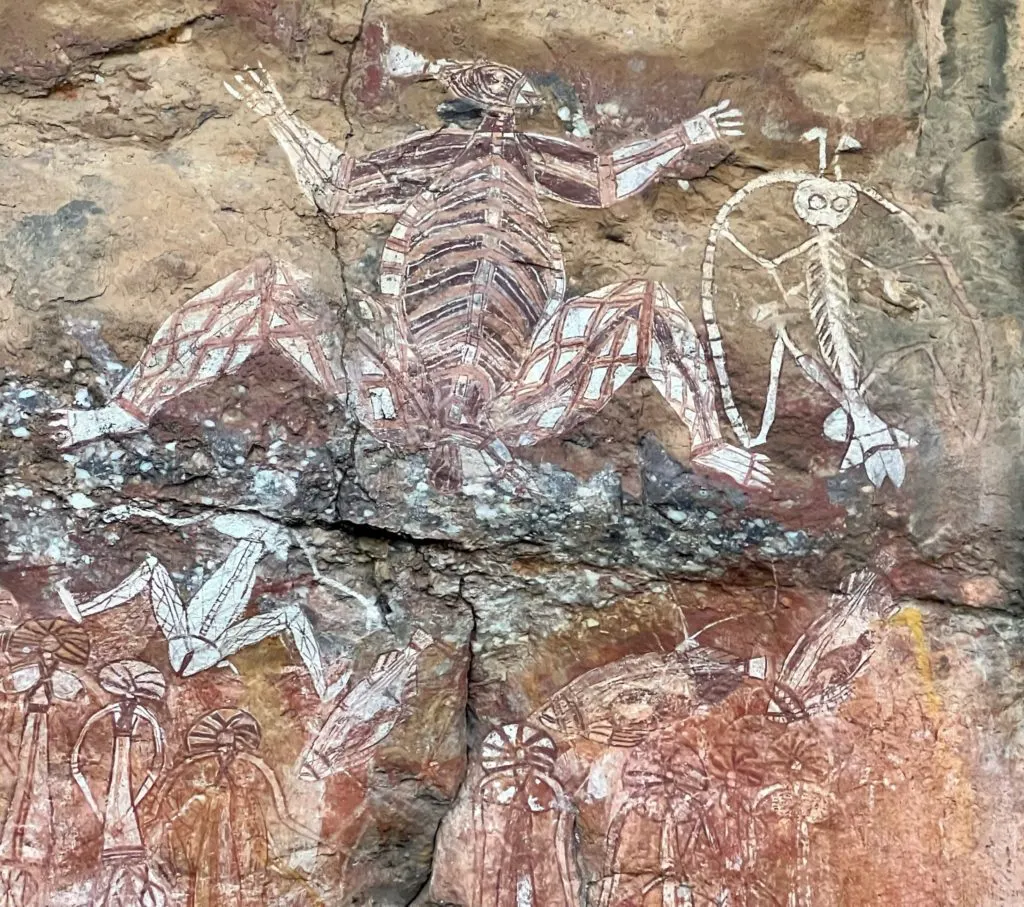
Planning a Kakadu National Park Visit
In addition to picking a season that matches what you most want to see, it’s also helpful to plan a route because the park is huge and the sites are several kilometers apart. Fortunately, the Australia National Park website provides these very useful guides:
- a downloadable 49-page PDF Visitor Guide that includes a map with icons showing what services are available at each location (toilets, fuel, food, camping, and lodging), and also provides information about the the park’s culture, environment, activities, and regions.
- a downloadable Visitor Center PDF with information about the cultural significance of both the Bowali Visitor Center in Jabiru and the Warradjan Aboriginal Cultural Center in Cooinda.
- an access map detailing what’s currently open and what’s closed: it’s constantly changing.
Getting Around Kakadu National Park
Click the map image below to go to an expandable, interactive Google Map. It has our route plotted and locations pinned. Here’s the route we took to get to the places we wanted to see:
Day 1: Entered Kakadu from Pine Creek on Kakadu Highway. Stopped at Cooinda where we visited the Warradjan Aboriginal Cultural Center and then took a 2-hour Yellow Water Cruise. After the cruise, we drove 56 km to Jabiru for the night.
Day 2: We backtracked 36 km on Kakadu Highway to Burrunggui (Burrungkuy) and Anbangbang where we visited the rock art sites and billabong. We then drove northwest about 75 km to the Ubirr rock art site. Afterwards, we headed back to Darwin.
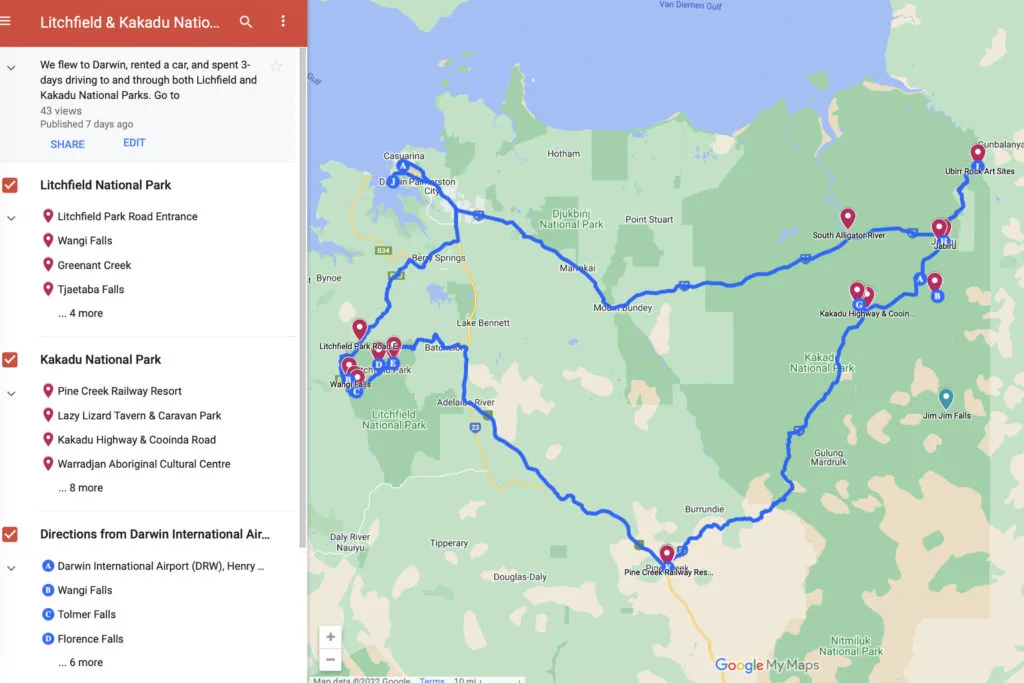
Park Passes (fees) for Kakadu National Park
You need a park pass to visit Kakadu National Park and can purchase passes online. You can also get them in the park at Visitor Centers and lodges. The passes are good for 7 days.
Prices vary by season and are less expensive during the wet season (1 November to 14 May). Our dry season (15 May – 31 Oct) passes cost $40 (AUD) per person.
The price is worth it, and the money is well used. It helps cover the costs of maintaining facilities, preserving the World Heritage sites, operating the park, and covering the lease payments to the traditional owners of the land.
The traditional owners are the Indigenous people whose ancestors have inhabited and protected this region for 65,000 years. This land is sacred to them. They own parts of the park and lease land to the National Parks Division to manage it.
Jabiru Township
Located about 250 kms east of Darwin, Jabiru is the only town in Kakadu National Park. It’s where we stayed and ate in Kakadu. Jabiru (JAB-uh-roo) is named after the Jabiru bird (which is also called a Black-necked Stork).
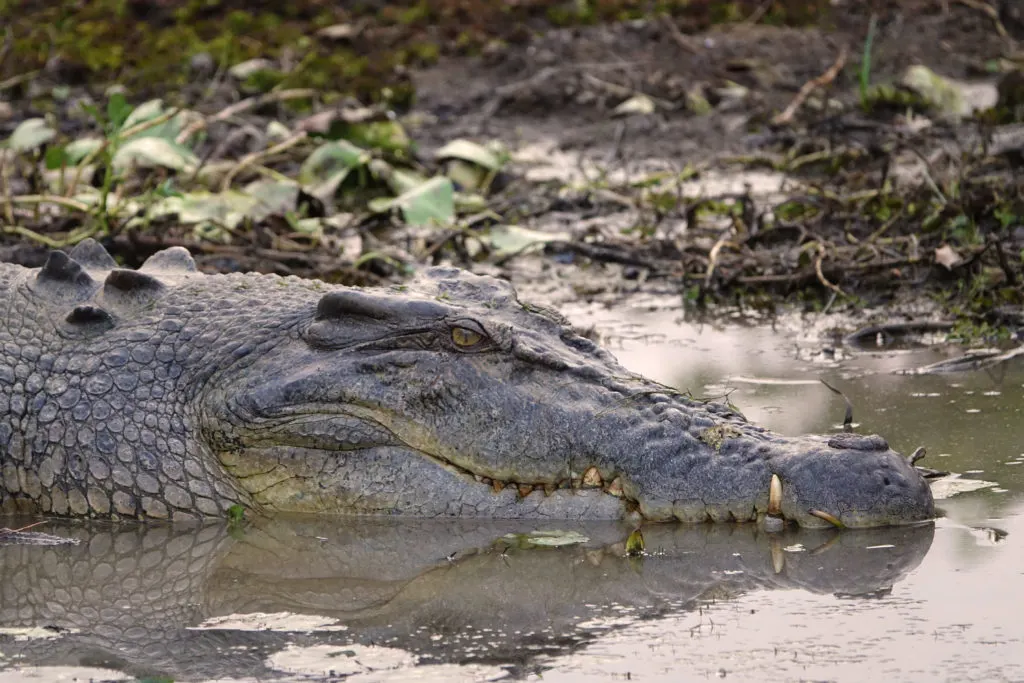
Yellow Water Cruise
Taking a Yellow Water Cruise is a must do in Kakadu National Park. There are about a half-dozen cruise options available; they operate throughout the day and year around. The early morning dawn cruise is best for bird watching. The late afternoon sunset cruise is the best for spotting crocodiles. The cruises begin in Yellow Water Billabong (near Cooinda Lodge) and go into the South Alligator River system.
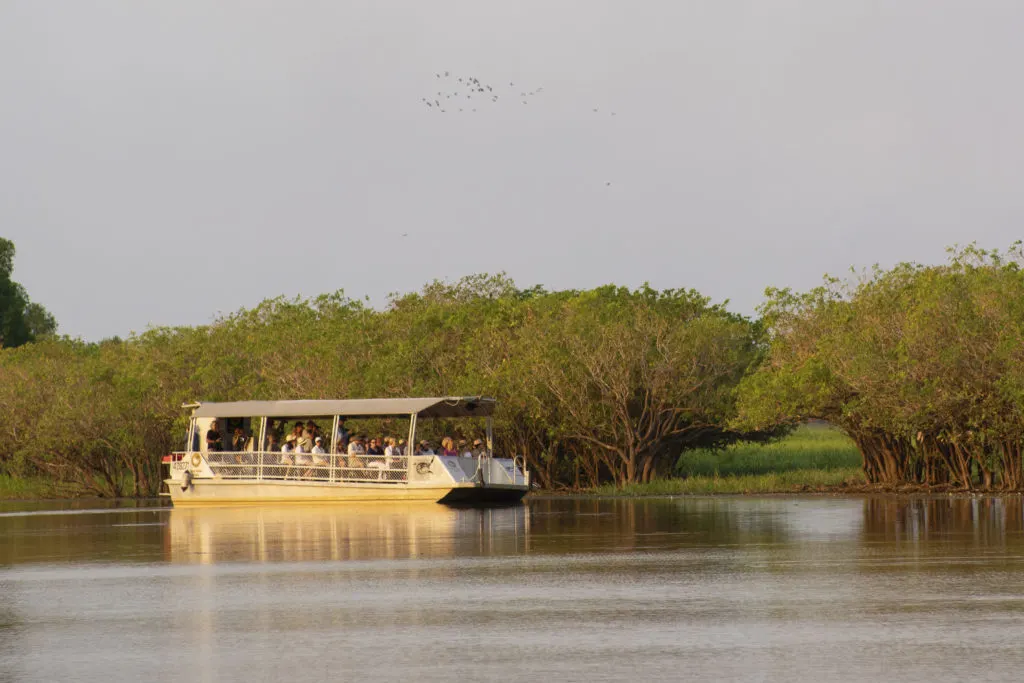
We chose the 2-hour, Sunset (4:30pm) Yellow Water Cruise because we wanted to see crocodiles. Australia has fresh water crocodiles called “freshies” and saltwater (estuarine) crocodiles called “salties.” The saltwater crocs can be very big and very dangerous, so it’s useful to know they are not limited to saltwater; they live in freshwater too.
Getting to the Cruise
Cooinda is a small settlement 56 km south of Jabiru Township and 4.4 km off of Kakadu Highway. The boats are docked in Yellow Water Billabong a short distance from Cooinda Lodge. The cruise operators recommend parking at the lodge, and they provide buses to shuttle passengers between the lodge and boat dock. If you wish, you can also drive and park near the dock.
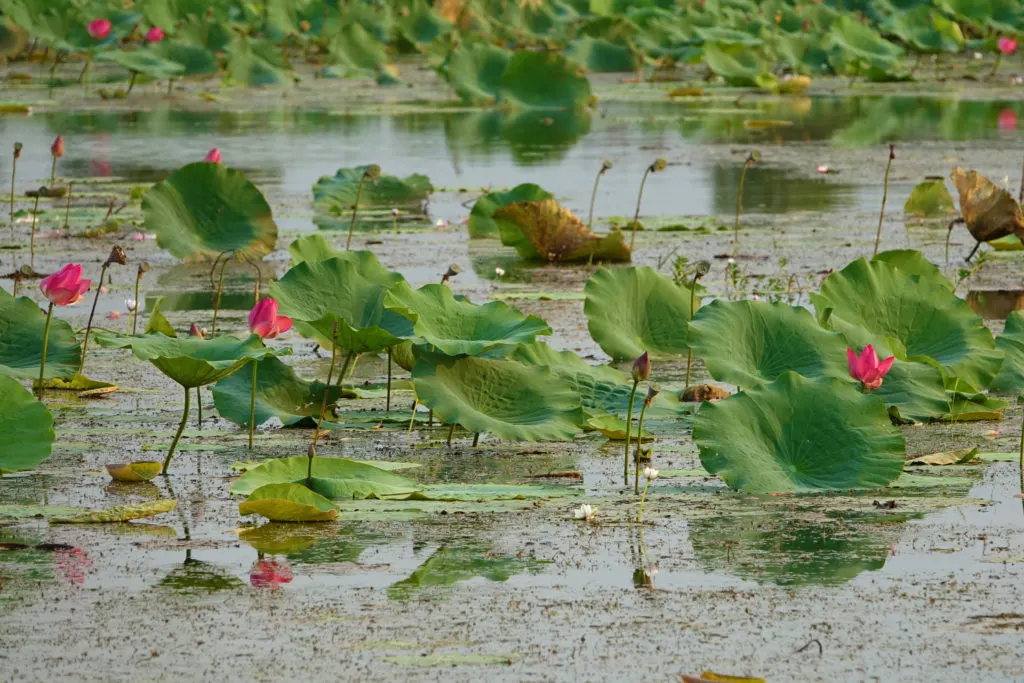
What We Saw on the Cruise
- several crocodiles including a few very large ones. We saw one lunge at a pair of ducks on shore. The croc missed the ducks, and I missed the photo op.
- a small group of wild water buffalo (although they were pretty far away).
- quite a few birds including jabiru (black-neck storks), a white bellied sea eagle, egrets, magpie geese, nankeen night herons, and huge numbers of plumed whistling ducks.
- waterlilies with beautiful lotus-like pink flowers and large green leaves, which turned to face the sun.
Do Kids Like Yellow Water Cruises?
There were at least a dozen young children on our cruise and a few teenagers too. The younger kids were really enthused about the Yellow Water Cruise, and they asked the pilot/guide lots of questions. They were especially excited about the crocodiles and wanted to know how big they get and how fast they run. The teens had their smartphones in hand and were busy taking photos.
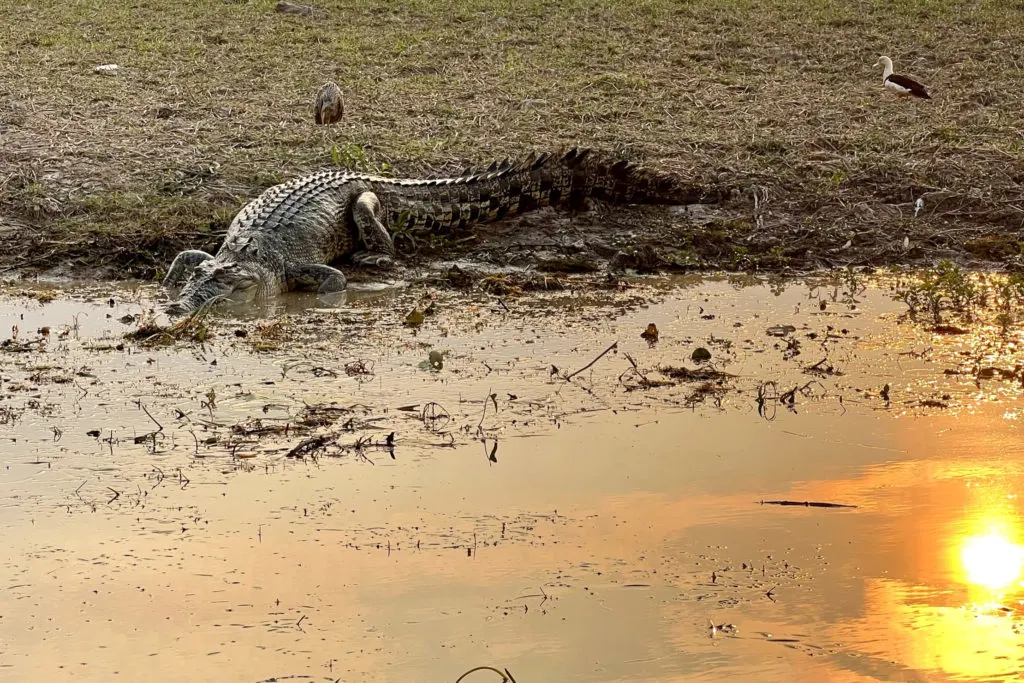
What are Billabongs and Yellow Water?
Yellow water refers to water in seasonally landlocked waterholes called Billabongs. The Billabongs we saw were not yellow, so we asked why it’s called yellow water? Our pilot/guide said no one knows for sure, but she said there are three theories:
- Wild buffalo wade into the water stirring up the mud, which makes the water cloudy and clay colored.
- The acacia trees around the billabongs drop their yellow flowers into the water.
- The calm water reflects the colors of the setting sun.
I vote for theory 3. When the sun set, the colors reflected in the water did include yellow.
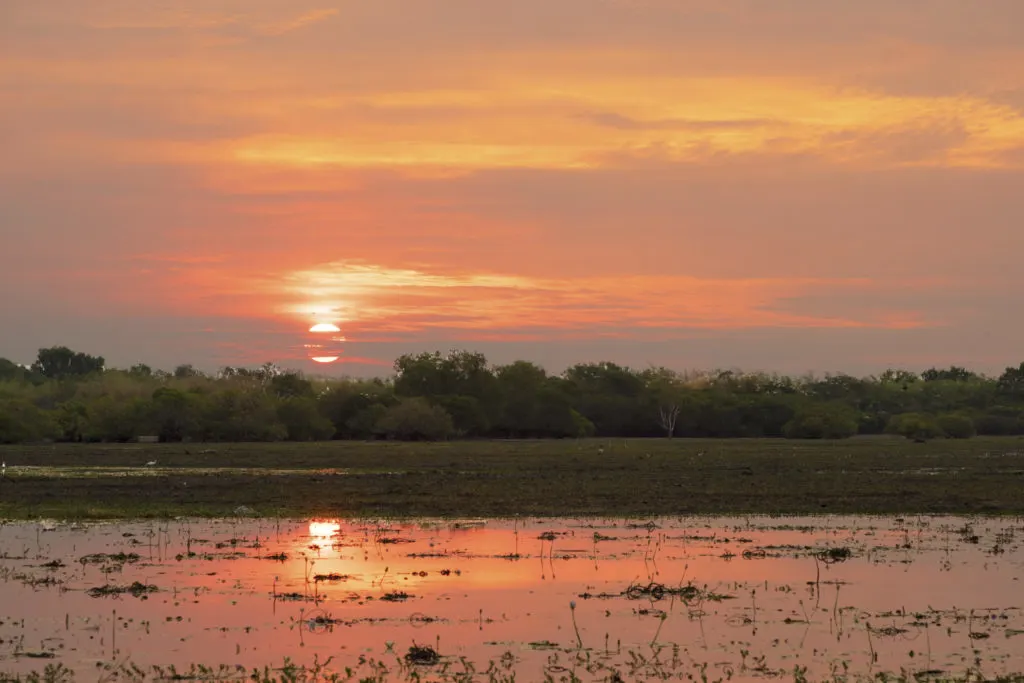
Tip: Bring insect repellant. When the sun sets, the mosquitos came out.
Are there Alligators in Australia’s Alligator Rivers?
Australia’s three Alligator Rivers (East, West, and South) are home to both fresh and saltwater crocodiles, but there are no alligators anywhere in Australia. It’s a case of mistaken identity. While exploring the area in 1820, Lieutenant Phillip Parker Kingin saw crocodiles and thought they were alligators. (Source)
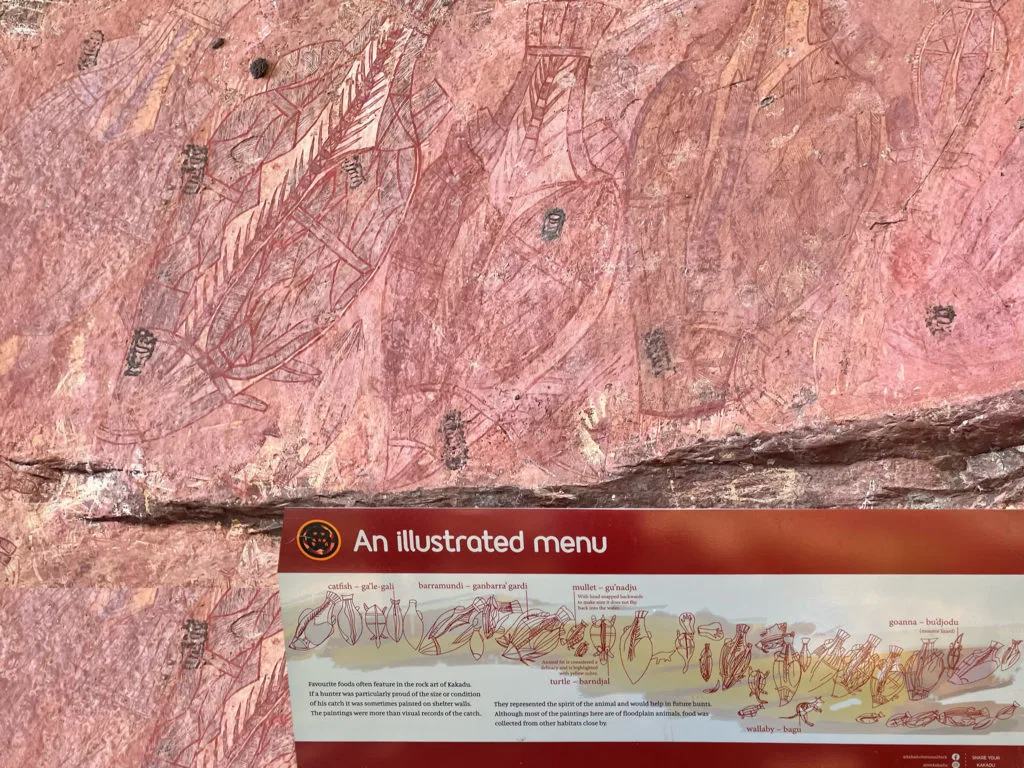
Ubirr Rock Art
Ubirr is a huge outcrop on the Nadab floodplain. It has areas that offer both protection from the elements and smooth walls for painting. So, for thousands of years, it’s been a popular site for celebrations, food gathering, storytelling, and rock painting. It has an important collection of Aboriginal rock art and is one of the reasons Kakadu is a UNESCO cultural site.
Ubirr has a 1 km accessible circular track that weaves through the rock art sites. Some of the art works have really nice signage explaining their meaning. Examples are stories about creation, good behavior, laws, dangers, and food gathering.
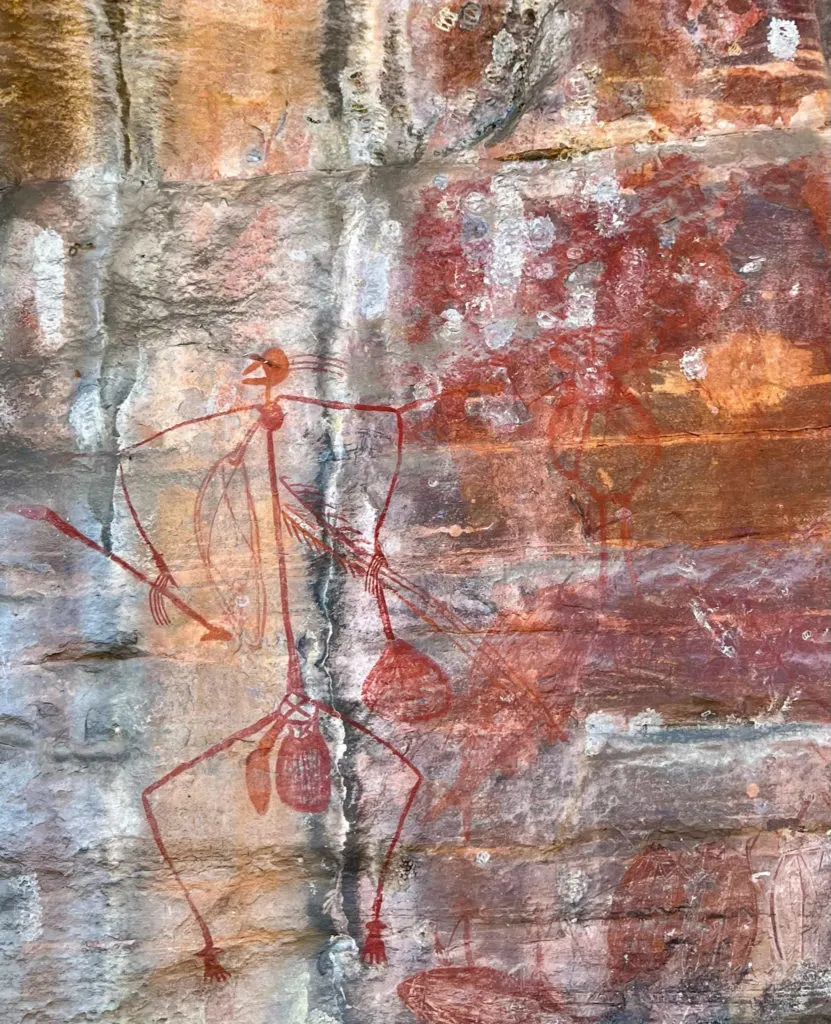
A Behavior Lesson
The image above is a lesson in good behavior. In this case, the message is that stealing is wrong and thieves will be punished. The painting illustrates the story about Mabuyu who has been fishing and is carrying the fish he caught on a string. Thieves cut the string and steal his fish. Later, after the thieves have eaten his fish and retired to their cave, Mabuyu moves a huge stone over the cave entrance trapping the thieves inside. Justice is served. (Source: sign at the site)
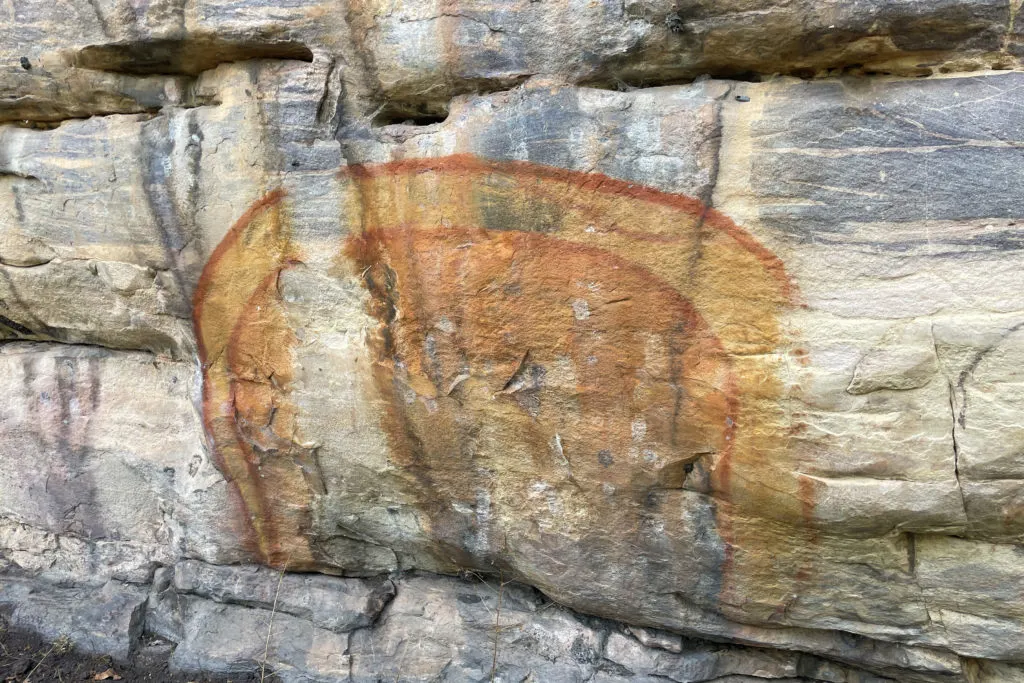
Rainbow Serpent
The names and descriptions vary among Australia’s Aboriginal languages, so this is likely an extreme over simplification: Rainbow Serpent is a major part of the Dreaming and Creation period in Aboriginal history. The Rainbow Serpent both protects and controls life giving water. In some clans, a rainbow means the Rainbow Serpent is moving from one waterhole to another. (Source)
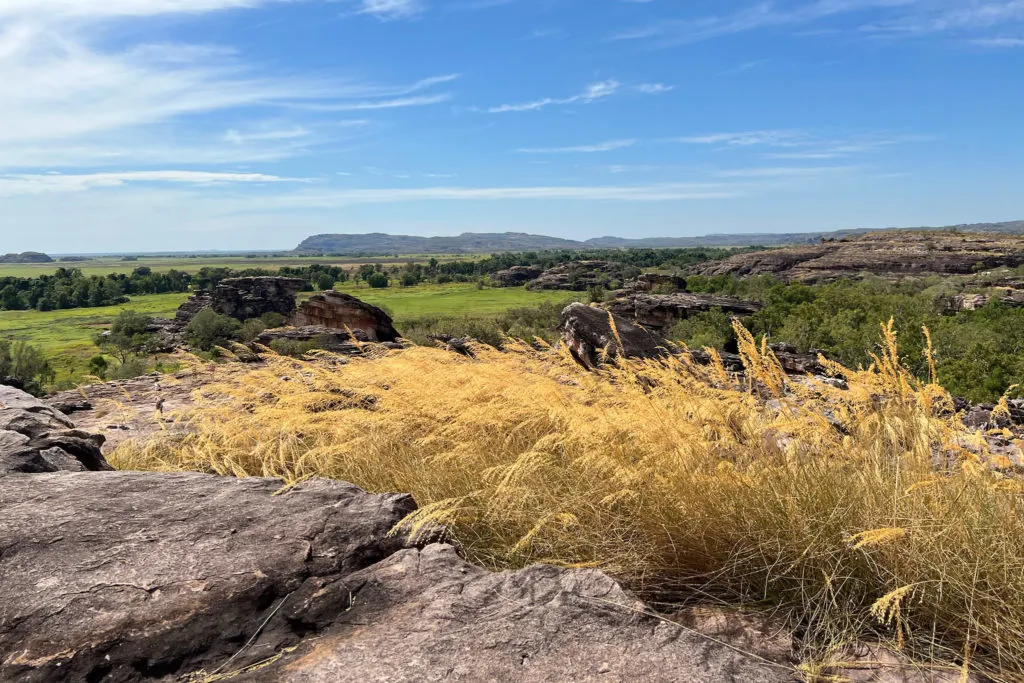
Nadab Floodplain Lookout
There’s a steep, rocky trail that branches off the main track leading to the top of Ubirr. It’s a 250 m climb, but the 360-degree views of the Nadab floodplain are worth it.
Getting to Ubirr
Ubirr is approximately 40 km from Jabiru and is open all year. It’s an easy drive on a sealed road, but low-lying sections can be closed during periods of heavy rain.
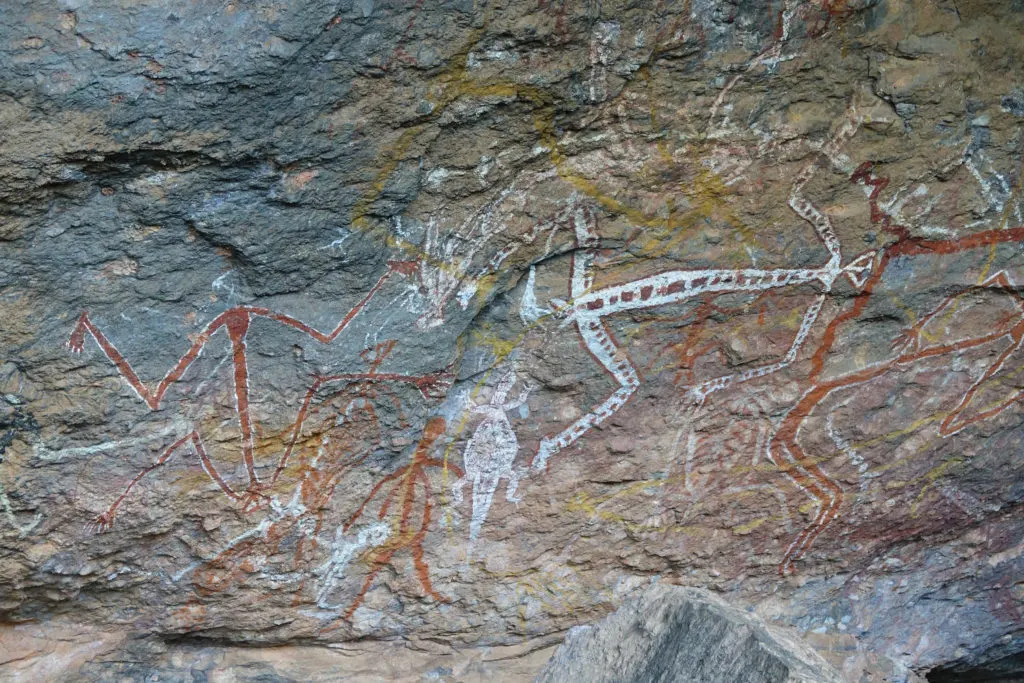
Anbangbang Rock Art Site
This is a great location with amazing rock art. It’s only 36 km from Jabiru and is easily accessible on sealed roads. The 3 top things to see/do here are:
- take the 1.5 km walk, which loops through several rock art sites and past an ancient Aboriginal shelter.
- see wildlife and flora on the 2.5 km Anbangbang Billabong track.
- climb to the top of the outcrop (Burrunggui) for great views.
Before we visit the rock art, the billabong, and maybe even climb to the top of the outcrop, let’s sort out the conflicting names and signage. The road signs, park signs, maps, and even the National Park website call this location Burrungkuy (Nourlangie). They also call the location of some, but not all of the rock art Anbangbang Gallery. The Aboriginal people have asked that we call these places by their traditional names. Here’s their request:
“The upper area of this outcrop has always been called ‘Burrunggui’ (pronounced Boo-rong-goy). The lower area is called ‘Anbangbang’ (pronounced Arn-barng-barng)” … “Now we are asking visitors to use the right names, Burrunggui and Anbangbang.” (Source: National Park sign at the site)
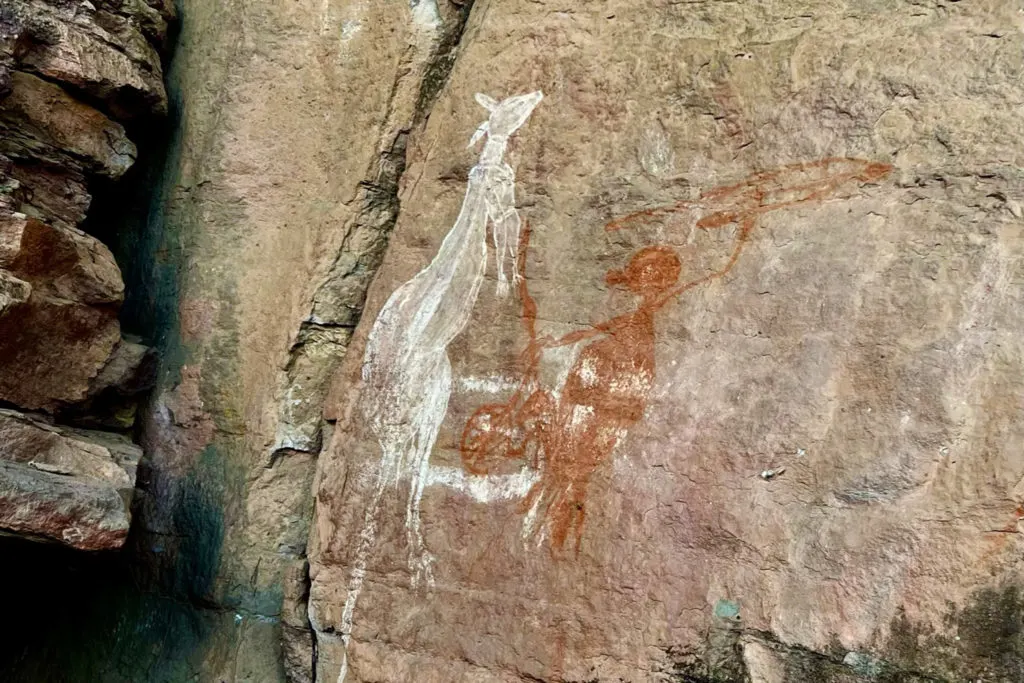
The outcrop site has trails and boardwalks that weave through areas with rock art. This location has rock surfaces that are protected from the elements either by overhanging rocks or recesses in the rock walls.
The rock walls and passages in the Burrunggui /Anbangbang outcrop have served as a shelter, gathering place, and painting site for thousands of years. The Aboriginal people painted pictures on the walls that depict their traditional ways of life and tell their stories. The rock art is part of the reason Kakadu National Park is listed as a World Heritage cultural site.
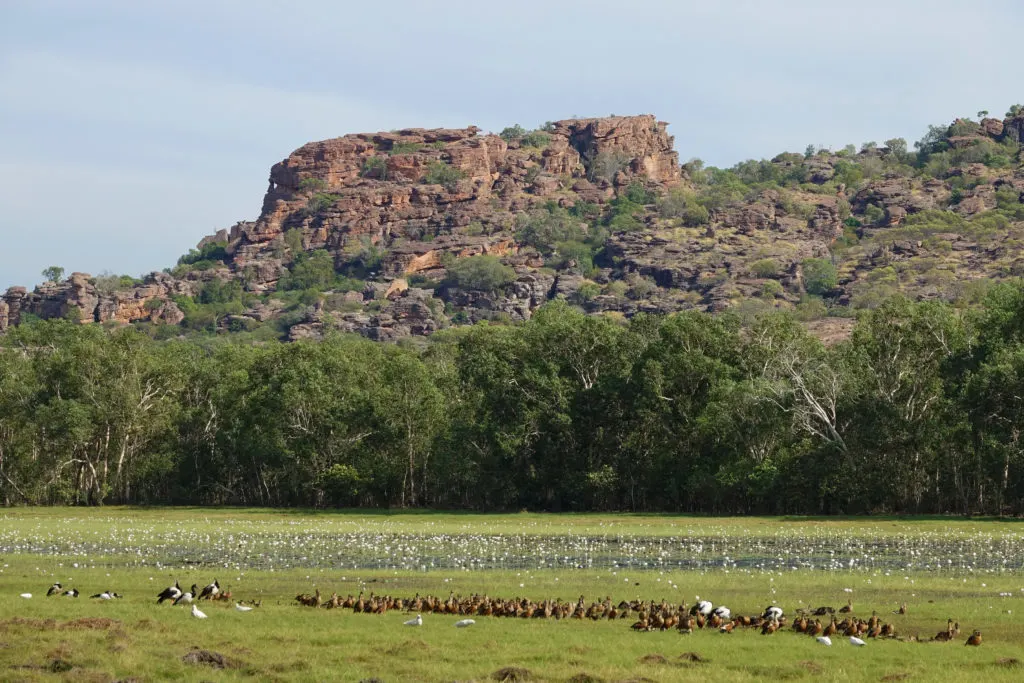
Anbangbang Billabong
A billabong is a seasonally landlocked waterhole. On our visit, the Anbangbang Billabong had already dried up considerably — crowding the ducks and geese. You can walk all the way around Anbangbang Billabong on a marked, 2.5 km circular track.
You’ll see lots of birds and possibly wallabies around the shore. Just don’t get too near the water’s edge because there can be crocodiles too. They can’t run far on land, but they run really fast for short distances.
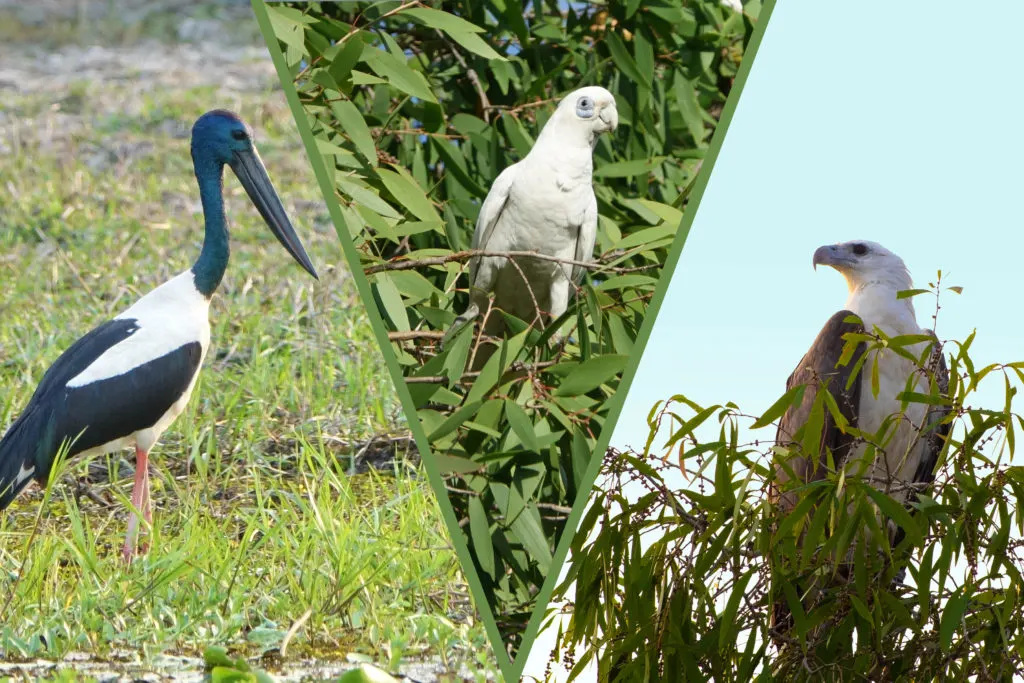
Kakadu Birds
We saw quite a few birds like the jabiru, western corella, and white bellied sea eagle in the above image. We also saw lots of egrets, magpie geese, and plumed whistling ducks. The large black and white bird on the left is a Black-necked stork, but in Australia it’s often called a jabiru (JAB-uh-roo). (Source)
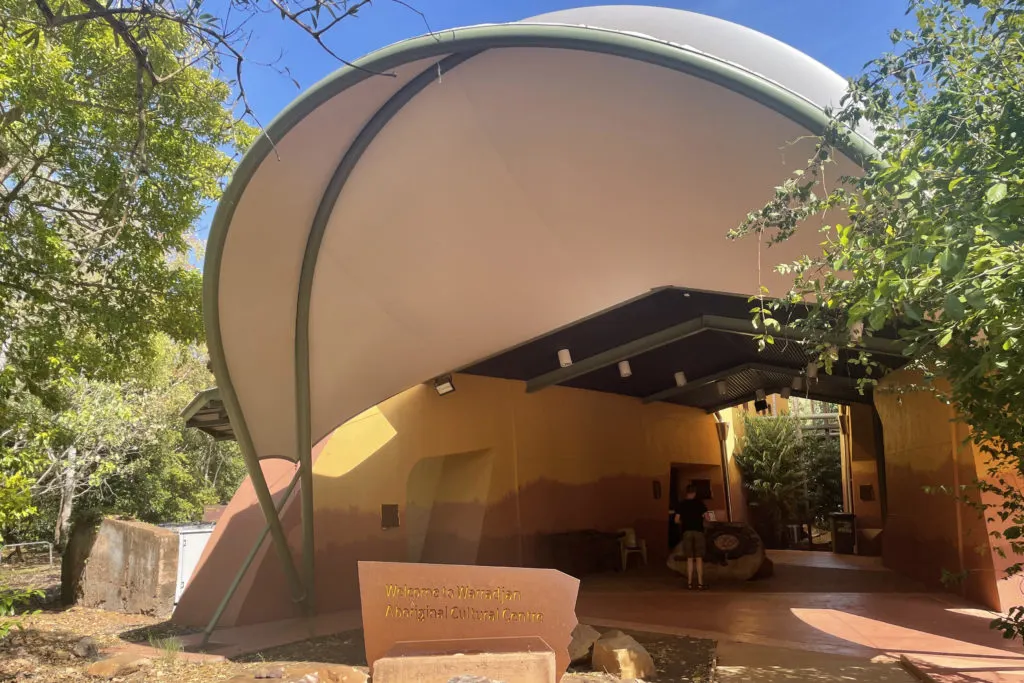
Warradjan Aboriginal Cultural Centre
The Warradjan Aboriginal Cultural Centre is a highly recommended stop. The exhibits are designed to share the culture of Kakadu’s Indigenous people and provide a better understanding of and appreciation for the rock art sites. The theme of the center is “Our land is our life.”
The building is shaped like a pig-nosed turtle called Warradjan. It’s located just 3.7 km off Kakadu Highway on the road to Cooinda. The exhibits were really impressive, and I wish I had photos; however, photography is not allowed in the exhibit area. The centre also has a large gift shop with locally made arts and crafts.
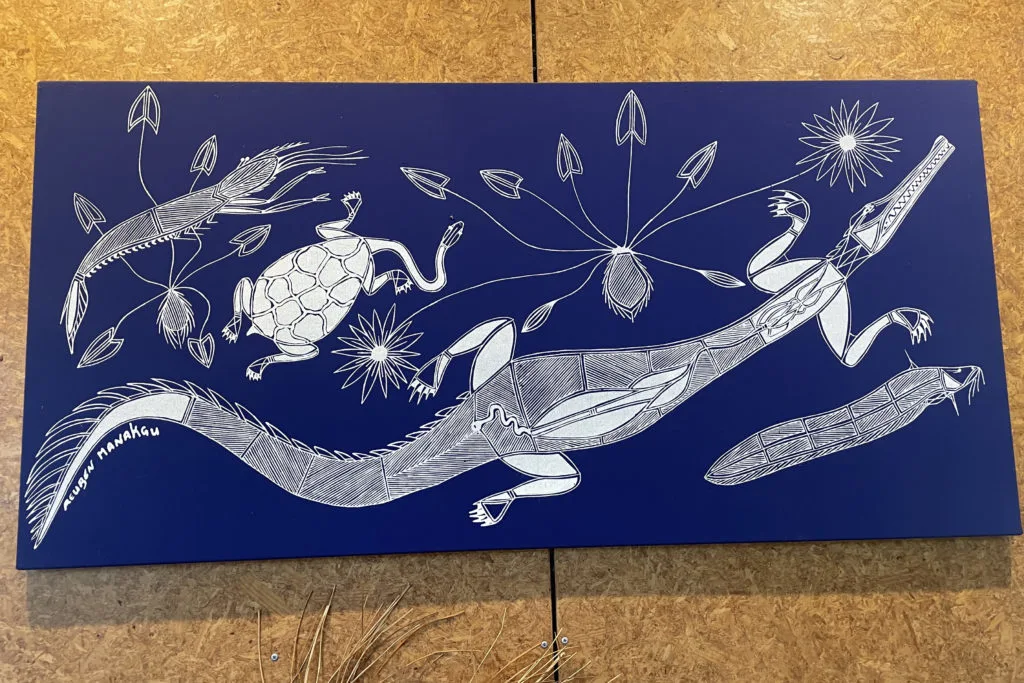
Local Aboriginal people created the centre and the exhibits depict their life. There are tools including spears, woven baskets, dilly bags, fish traps, and boomerangs. There are also exhibits featuring different aspects of daily life: hunting, fishing, and gathering bush tucker (bush food).
Some exhibits include stories by tribal elders, which connect the subject to their culture and laws. For example, one exhibit illustrates rules for bloodlines and marriage rights (which groups were allowed to intermarry and which ones were not.
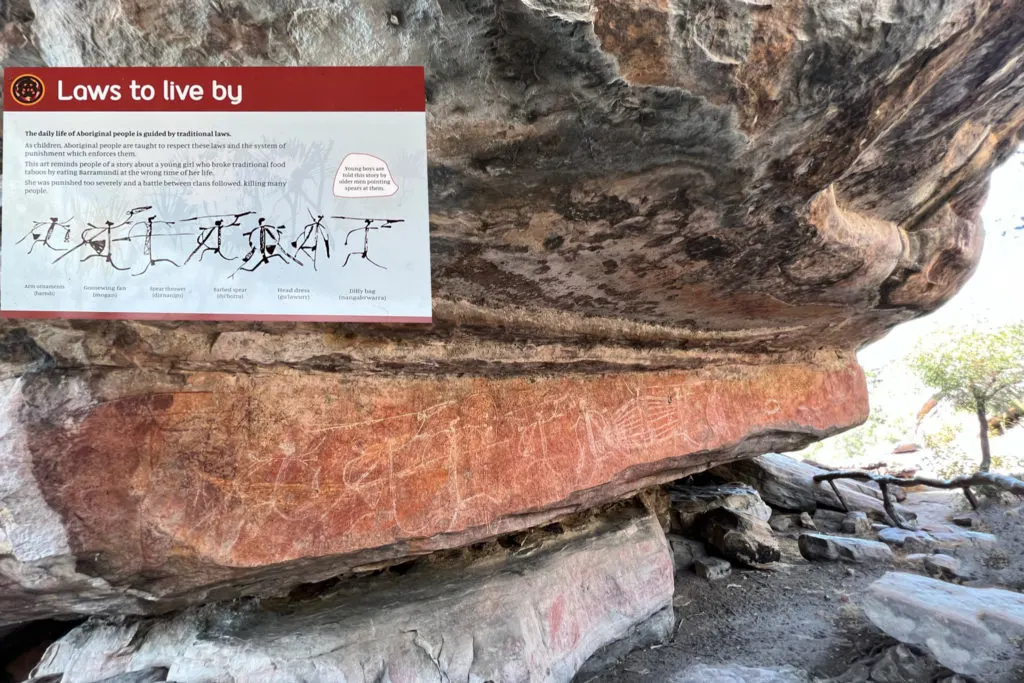
Learn More About Kakadu
Bowali Visitor Centre in Jabiru
The Visitor Center has interpretive exhibits, Aboriginal arts and crafts and has the latest information about what’s open, road conditions, and ranger-lead tours and activities.
Talks, Walks, and Workshops
There are talks, guided walks, and workshops (like painting, weaving, and spear-making) available in Kakadu National Park. They are led by local Aboriginal people and are scheduled through Eventbrite.
Information Sources, Glossary, and Pronunciations
Information sources
Before visiting Kakadu, I knew nothing about the park, yellow water, billabongs, Aboriginal life, or rock art. So I learned nearly everything in the article from these four sources:
- the many interpretive signs at the park sites, especially for the rock art.
- the talk our pilot/guide gave during our 2-hour Yellow Water Cruise.
- exhibits at the Warradjan Aboriginal Cultural Center.
- the government of Australia’s National Park website, especially the 49-page Kakadu National Park Visitor Guide.
Glossary: A few terms that might be unfamiliar
| billabong | a seasonally landlocked waterhole |
| bush tucker | bush food |
| carpark | parking lot to garage |
| sealed road or trail | paved |
| 1 km return | 1 km roundtrip (or loop/circular track) |
| freshies | freshwater crocodiles |
| salties | saltwater crocodiles (which live in both fresh and saltwater) |
A Few Pronunciations
- Ubirr (oo-birr) source: sign at Ubirr
- Burrunggui (Boo-rong-goy) source: sign at Burrunggui/Anbangbang
- Anbangbang (Arn-barng-barng) source: sign at Burrunggui/Anbangbang
- Jabiru (JAB-uh-roo) source: my Australian son-in-law.
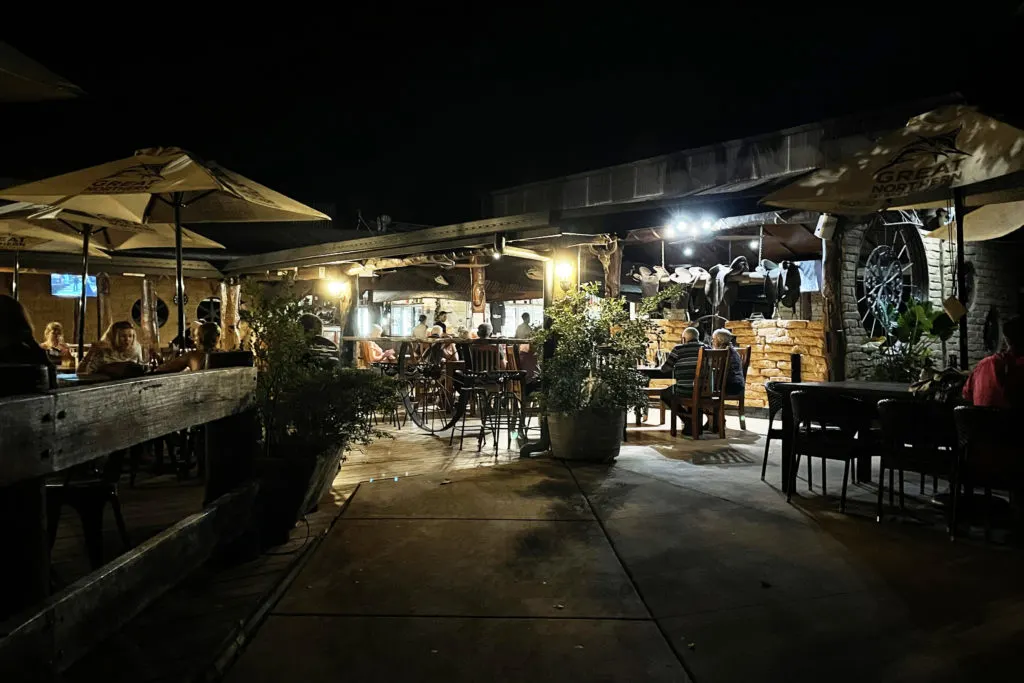
Where We Stayed and Ate
Once you leave Darwin, the lodging choices become more rustic. The places we stayed were perfect for our trip, but I want anyone reading this to know these are not plush 4-star hotels. They were clean, convenient, and had everything we needed.
Enroute to Kakadu
We stayed at the Pine Creek Railway Resort in Pine Creek. It’s located at the junction of Stuart and Kakadu Highways near the southwest entrance to Kakadu National Park.
We had dinner and drinks at the nearby Lazy Lizard Tavern & Caravan Park. It’s a big, busy, fun place that’s a very short walk from Pine Creek Railway Resort. We had Beer Battered Barramundi Fish & Chips. The food and beer were very good, and we were happy.
In Kakadu National Park
We stayed at the Anbinik Kakadu Resort in Jabiru. Our building had six bedrooms and two shared bathrooms that were in a small building outside. It was a bit like camping but with AC, electricity, and a real bed.
We had dinner at Anbinik Restuarant at the resort. The restaurant serves quite nice Thai food. It does not serve alcohol.
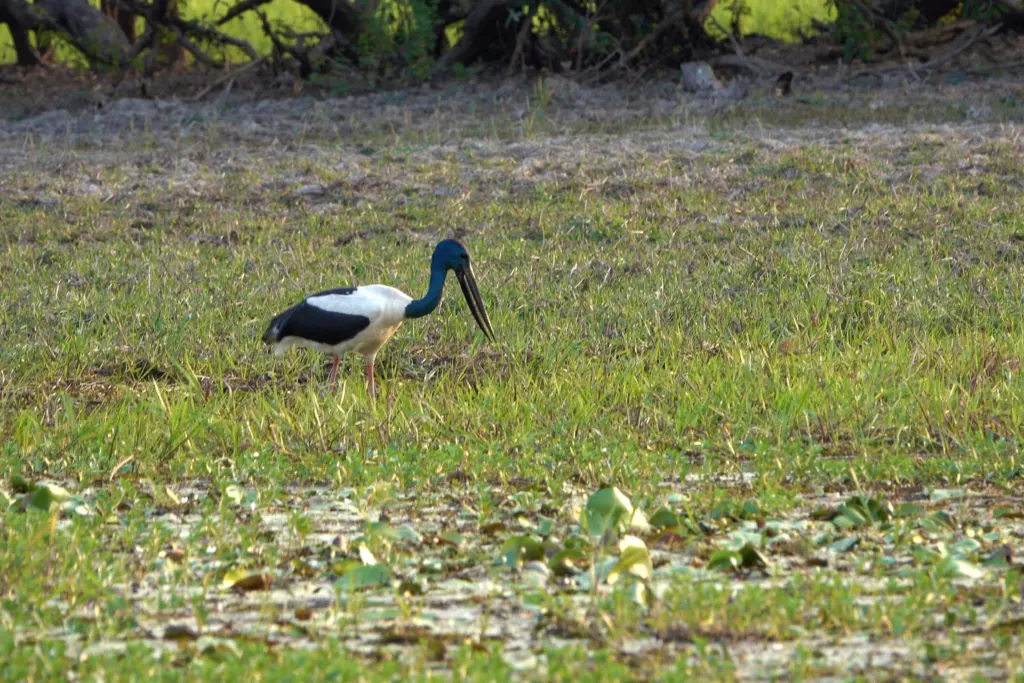
Conclusion
I loved seeing and learning about the rock art, yellow water, and billabongs, but what I loved most about Kakadu National Park is the stewardship the Indigenous people have for the land and everything that lives on it. Through tens of thousands of years, their ancestors learned how to care for the land and how to live on it.
On this amazing trip, we also visited both Litchfield and Uluru-Kata Tjuta National Parks and took the The Ghan train through the outback.
Author bio: Ginny Vail is a travel writer, who loves sightseeing, photography, and videography. She’s been to 45 countries across six continents and traveled by air, car, bus, train, boat, and ship. Her articles can help you discover places to go, sights to see, and details about when and how to visit them.

